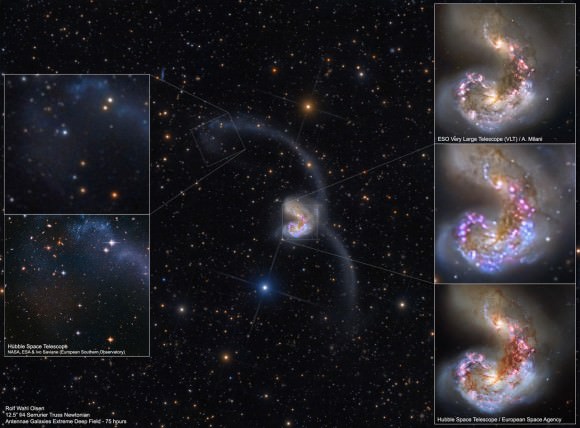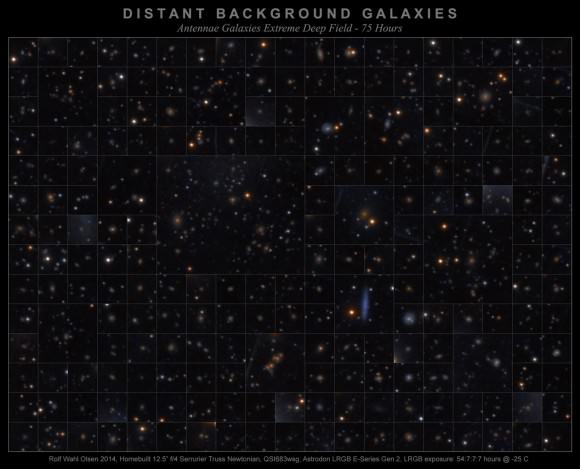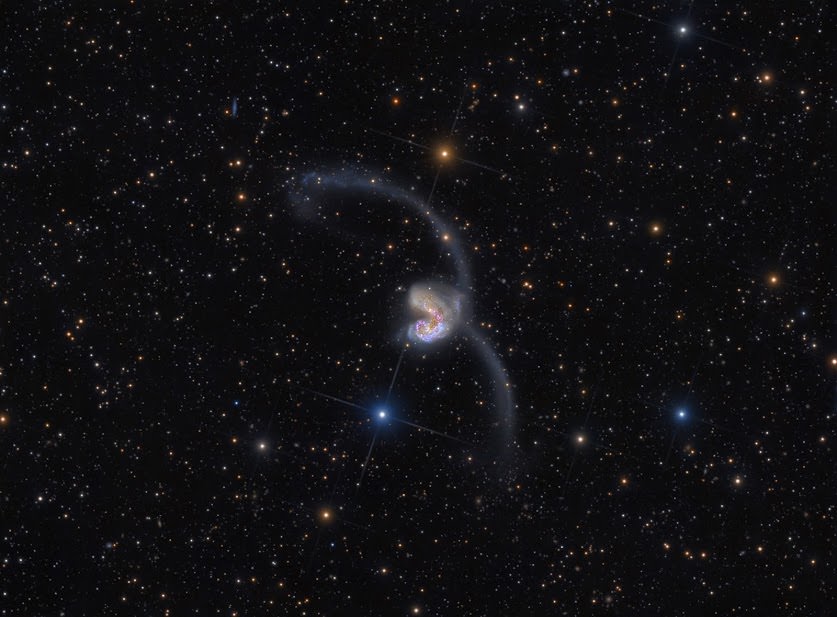You might think the image above of the famous Antenna Galaxies was taken by a large ground-based or even a space telescope. Think again. Amateur astronomer Rolf Wahl Olsen from New Zealand compiled a total of 75 hours of observing time to create this ultra-deep view.
“To obtain a unique deep view of the faint tidal streams and numerous distant background galaxies I gathered 75 hours on this target during 38 nights from January to June 2014,” Rolf said via email. “At times it was rather frustrating because clouds kept interrupting my sessions.”
But he persisted, and the results are stunning.
He used his new 12.5″ f/4 Serrurier Truss Newtonian telescope, which he said gathers approximately 156% the amount of light over his old 10″ f/5 telescope.
Rolf even has put together comparison shots from the Hubble Space Telescope and the Very Large Telescope of the same field of view:

And if you look even closer you can see an incredible field of distant background galaxies. “Apart from the Antennae itself, what I like most about this scene is the incredible number of distant background galaxies,” Rolf told Universe Today. “This area in Corvus seems very rich indeed. The full resolution image is worth having a look at just to see all these faint galaxies littering the background. There are many beautiful interacting pairs and groups which would be fantastic targets in themselves if they were only closer.”
Here’s a collage of some of the background galaxies that Rolf compiled:

See more of Rolf’s work at his website or on G+. You may remember that Rolf took the first amateur image of another solar system, at Beta Pictorus.
Want to get your astrophoto featured on Universe Today? Join our Flickr group or send us your images by email (this means you’re giving us permission to post them). Please explain what’s in the picture, when you took it, the equipment you used, etc.


And here, I thought you couldn’t get deep-sky objects like this to stack well.
But I suppose each image in the stack is a 2 hour long exposure?
Actually there are three interacting galaxies in this system. At the far end of the upper tidal arm is a diffuse region composed of stars (and neutral hydrogen) that has been identified as a tidal dwarf galaxy: http://fr.arxiv.org/abs/astro-ph/0311200
This small faint dwarf galaxy, similar in appearance to many of the dwarf galaxies that surround the Milky Way and the Andromeda Galaxy, was formed as a byproduct of the collision between NGC 4038 and NGC 4039, the two massive galaxies in this interacting system.
Edit: sorry for the broken link but there appears to be no way to link to papers on the ADS using this comment system. Links to to GIF, PDF or abstract all show as broken.
Edit2: I’ve included a link to a 2003 paper on arXiv that describes the tidal dwarf galaxy in NGC 4038/39.